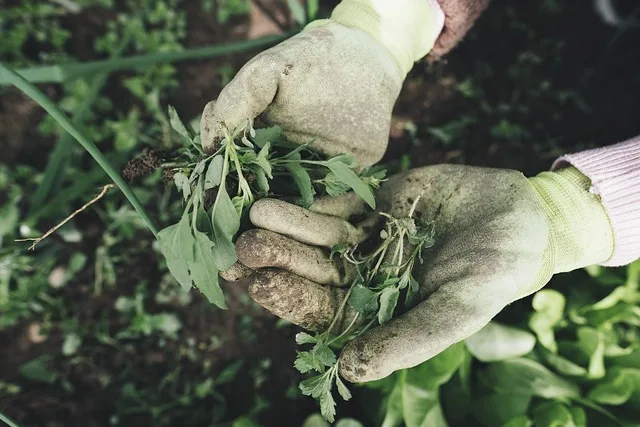
A lovely yard teeming with lush greens and vibrant ornamentals is always a stunning (and relaxing) sight. Unsurprisingly, many Aussies love transforming their properties into spectacular natural works of art. But they cannot do it alone.
They need a landscaper – someone well-versed in designing fascinating layouts and placing decorative elements in their rightful places to create a Zen-like atmosphere. And that’s where you come in.
But wait! You cannot just start designing people’s landscapes without checking out these six things to do before going full time as a landscaper.
1. Find out everything about the industry in your area.
Aspiring landscapers must know if the future looks bright. Otherwise, there’s no point going into a market with a downward trajectory. Thankfully, the Australian landscaping industry outlook is promising, with experts projecting a respectable 13.5% growth over the next half decade.
Besides industry outlook, you will also want to learn about the following.
- Target market – Although the national landscaping industry promises robust growth in the coming years, it might not be the case in your area. You might want to check local experts’ opinions.
- Competition – Consider studying existing landscapers, what they’re doing, their prices, and services. Identify potential “gaps” where you can stand out or discover weaknesses you can exploit.
2. Learn the legal requirements for starting a local landscaping business.
Laws exist to protect people against unscrupulous practices, whether provider or consumer. And that is true with landscaper businesses in Australia, with limitations of liability, consumer guarantees, privacy policies, complaints procedures, and online platform terms of use taking front and centre.

So, you’ll want to accomplish the following before going full time as a landscaper.
- Consider your business’s structure – Are you a sole trader handling all business aspects, or do you have a partnership with at least another individual?
And if you want the landscaping business separate from your personal life, a company structure might be a good idea. Is it a joint venture, an indigenous corporation, a cooperative, or a trust?
You can ask a professional to differentiate these business structures and choose the most appropriate for your landscaping business.
- Contact the Australian Business Register (ABR) and secure the necessary business registration forms. Accomplish the documents and prepare other paperworks to apply for and get an Australian Business Number.
- Visit the local business registration office and ask for the requirements for securing landscaper permits and licenses.
3. Shop for an insurer to protect your business.
No business is immune to risks, including the landscaping industry. Equipment can malfunction or fail, clients can suffer injuries from incorrect landscaping procedures, and natural or human made calamities can undermine a project.
These issues can increase industry-related risks and significant financial losses, not to mention a hit on your reputation as a landscaper. Although insurers cannot address the latter, managing the former is easier with comprehensive landscapers insurance.
4. Brainstorm about branding.
Branding is necessary for any business to thrive, allowing it to establish an identity clients can easily recognise and relate to. Unfortunately, formulating a business name or brand isn’t always straightforward. So, how do you decide on a brand for your business?
- Ask family members, relatives, officemates (or former colleagues), neighbours, and virtually anyone for recommendations about a suitable brand name for a landscaper business. Include everything. After all, you will still evaluate each one.
- Assess and analyse each brand name suggestion, weeding out “bad-sounding” ones. Aim for something unique, clear, descriptive, and catchy, yet simple enough clients can remember it easily.
- Pick a brand name you can integrate into a business logo and tagline or slogan. Hence, it shouldn’t be too long to maximise a badge’s (or logo’s) character limitations. Apply the brand messaging to other business elements, ensuring consistency.
- Get your brand name and other business identification elements ready, and register the brand with the ASIC or Australian Securities and Investments Commission. This action ensures only you have this brand.
5. Invest in good-quality landscaping equipment and supplies.
Professional landscapers differ from DIYers in their equipment and supplies. Although you can buy pre-owned machines, you’ll want only good-quality units. So, what supplies, materials, and equipment should you prepare?
- A lawnmower is every landscaper’s best friend, whether a zero-turn ride-on unit or a commercial-grade push version. The former can cost you at least $3,000, while the latter is more affordable (except for high-end products).
- Trimmers are perfect for shaving plants where lawnmowers can’t. For example, trimming plants under decks, along fence lines, and around posts and flower beds are easier with string trimmers. Meanwhile, hedge trimmers are ideal for shaping shrubs and hedges.
- Edgers and leaf blowers are also essential landscaper tools. And so are sprayers, spreaders, and hand tools (i.e., shovels, pruners, shears, and rakes).
- Heavy-duty lawn bags and plastic buckets are vital for transporting grass clippings and other debris.
Although you don’t need a brand-new truck, a trailer would be nice to transport these landscaping equipment, materials, tools, and other resources from the office to clients.
6. Decide on the pricing.
Pricing your landscaping services can be tricky. You don’t want it too high to avoid scaring potential clients. You don’t want the prices too low either because some folks might think your services are shoddy.
Here’s a tip. Australians pay $2,000 to $6,000 to have a professional landscaper “fix” their landscape. However, larger projects or new home constructions can cost homeowners $4,500 to $50,000 (maybe more).
You can check the competition about their prices and decide to mark your offerings slightly higher or lower than these rates. Ideally, the pricing should still be within the industry standards in your location.
Conclusion
Although you must also devise an effective marketing plan and efficient financial management scheme, these six things discussed are enough to prepare you as a full time landscaper. Our advice is to stay updated of trends because these can spell success or failure of your landscaping business.
Partnering with industry leaders and establishing meaningful customer relationships should help you become a successful Australian landscaper. So, get ready to wow landscaping clients in your area.
